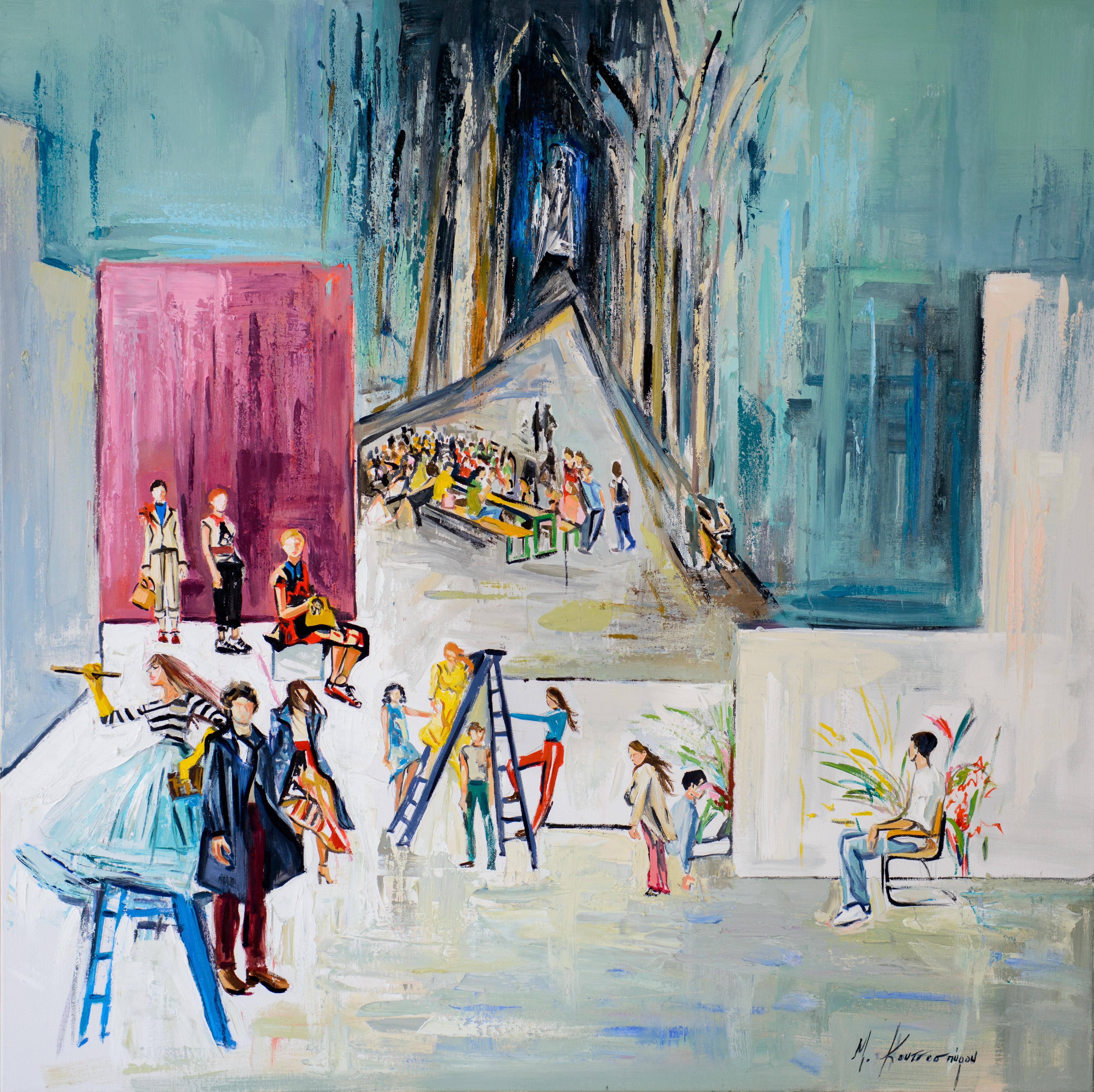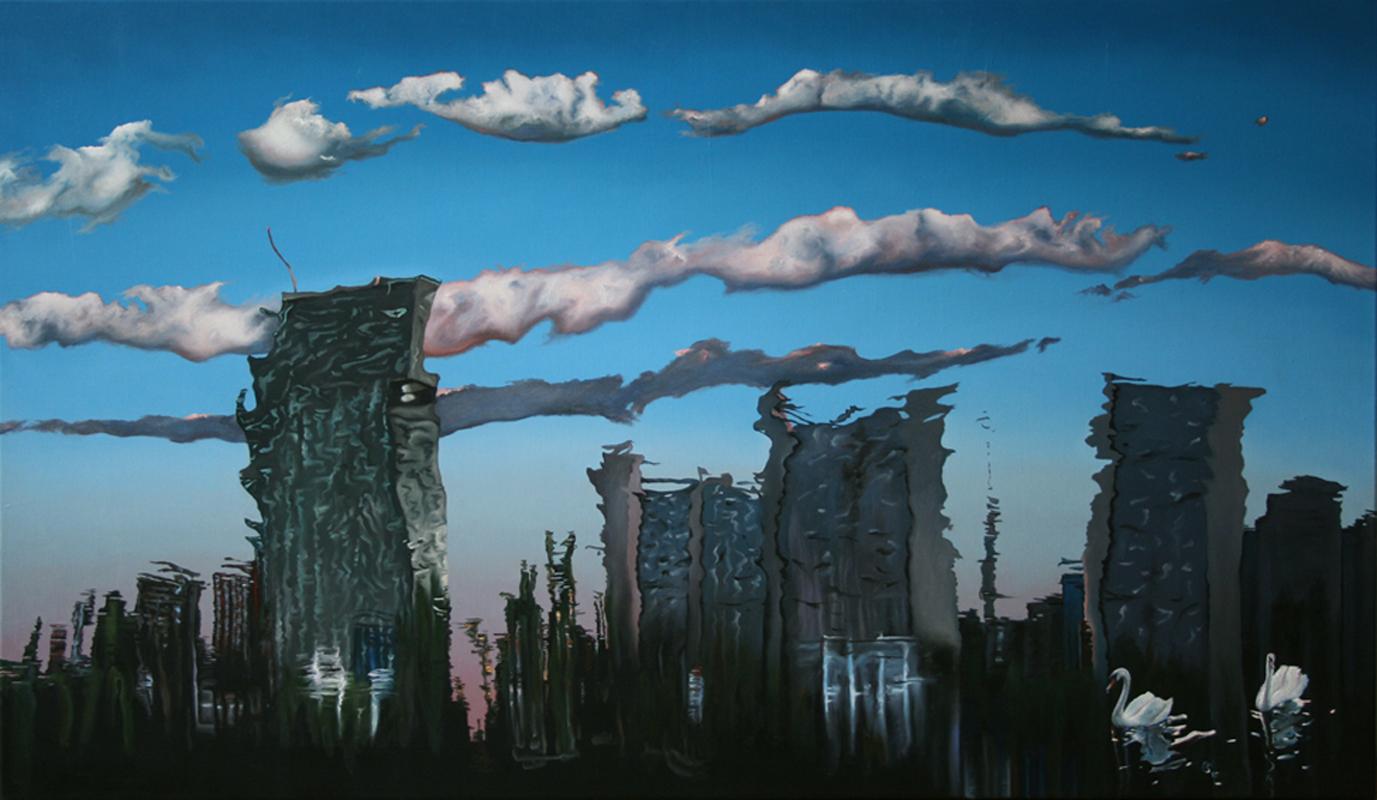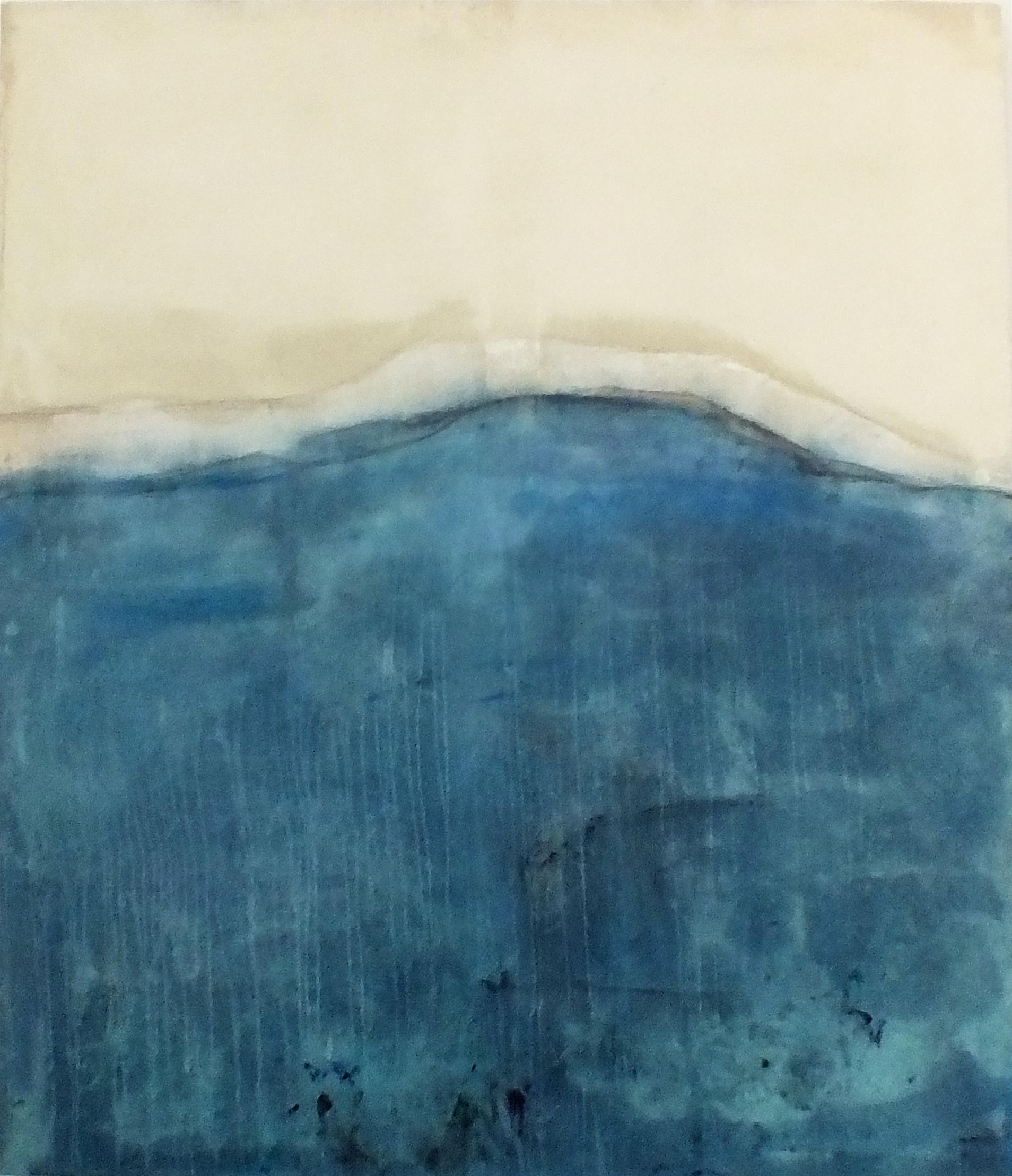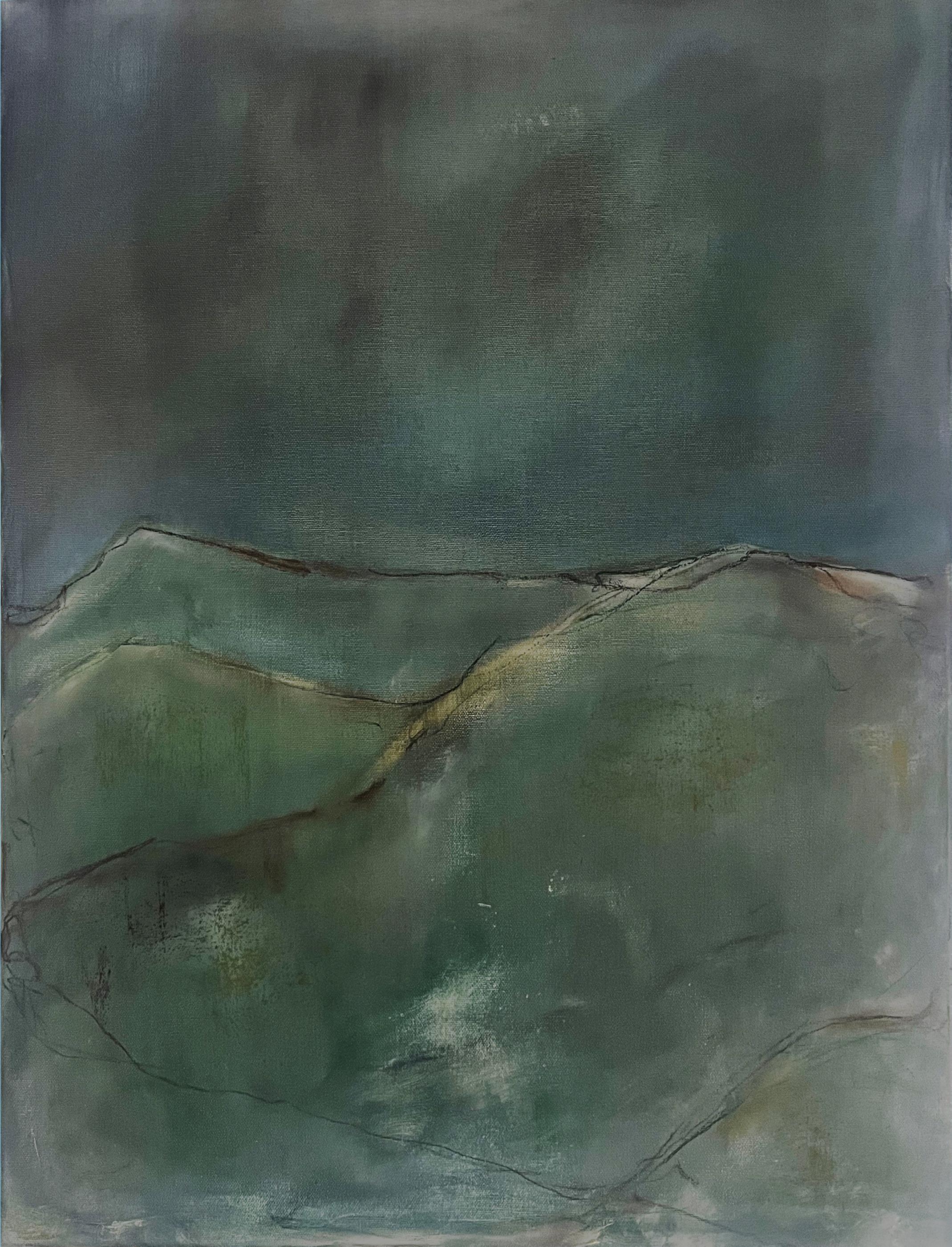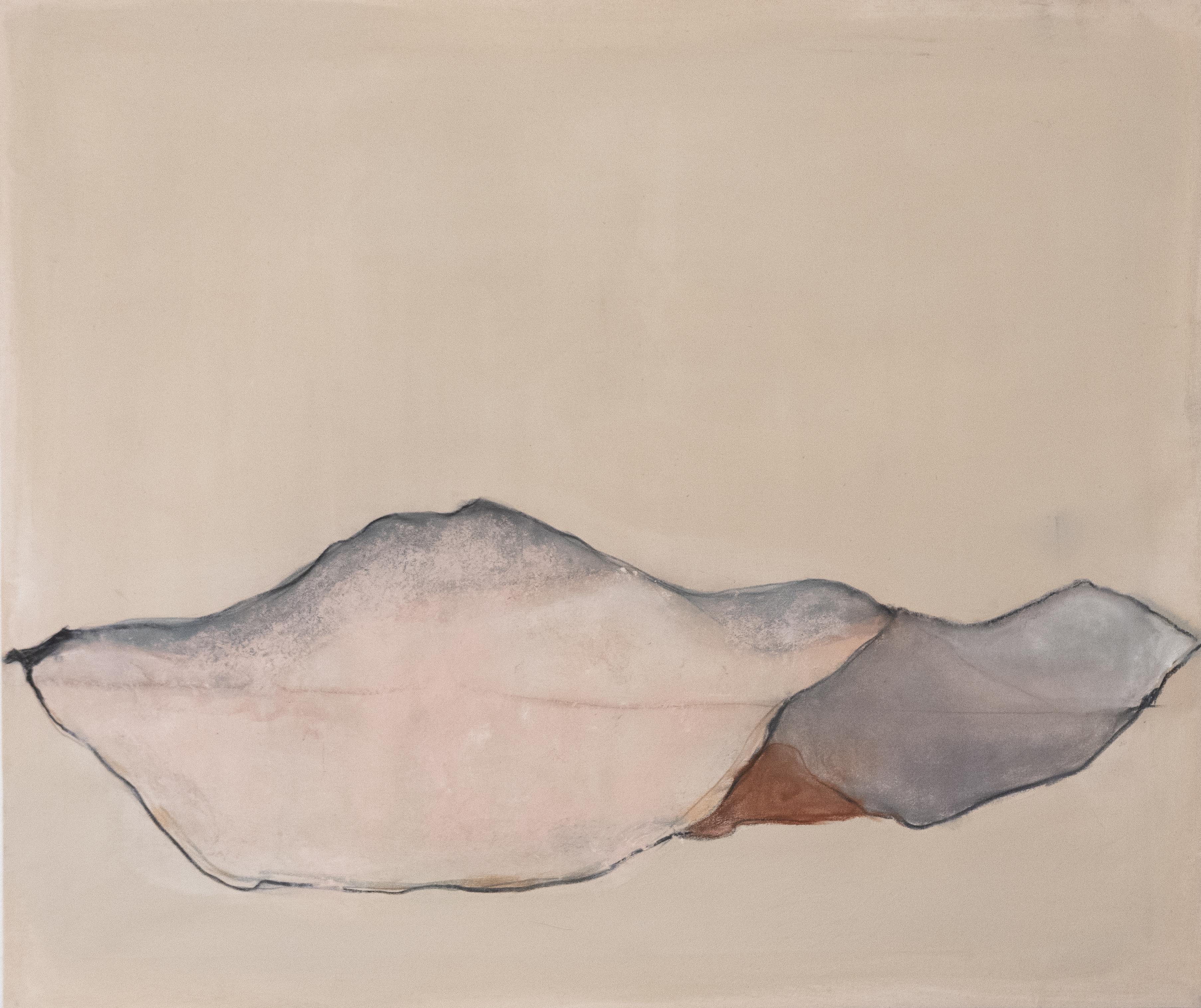Items Similar to "Montmartre Street Scene, Paris, France" Thomas Pradzynski, Architecture
Want more images or videos?
Request additional images or videos from the seller
1 of 7
Thomas Pradzynski"Montmartre Street Scene, Paris, France" Thomas Pradzynski, Architecture
About the Item
Thomas Pradzynski (1951 - 2007)
Montmartre Street Scene, Paris, France
Oil on canvas
16 x 32 inches
Signed lower right
At the age of 26 Thomas Pradzynski left his native Poland for Paris with the aspiration of becoming an artist. The year was 1977. Knowledge of architecture and a love of art were his main interests. His ideal was to "romanticize the empty streets and the traces of the past and to preserve places that are slowly disappearing." The path he laid before him was paved with warmly lit Parisian streets, dark windows and open doorways. The art he was about to create would not only echo his surroundings but also communicate his passion for their preservation.
The artist was born in Lodz, Poland, on November 29, 1951. His childhood was greatly influenced by his aunt Joanna, an artist in Krakow. Joanna recognized his talent and soon became his tutor. When he was nine, his family moved to the Montmartre district of Paris, where the city galvanized his creative spirit. The excitement of the modern city was like no other he had experienced. He was enamored by the freedom expressed by its inhabitants, most importantly, by the street painters with their brightly colored canvases. Upon returning to Poland in 1965, he resumed his artistic studies in painting and drawing.
Bowing to family demands that he pursues a more practical course in life, Thomas eventually took degrees in Sociology and Economics. In 1977 he exiled to Paris with his wife Joanna. Paris continues to inspire Pradzynski through its urban charm. The labyrinthine streets of Montmartre and the Latin Quarter have become his outdoor studios. Pradzynski's work explores and the streets of Paris like a solitary lover whom every window, doorway and cafe is filled with meaning. Much of Pradzynski's mood is created upon the stage of old Parisian buildings and storefronts. The actors become a window, two chairs, or a doorway whose interplay with light and shadow perform for the audience of our memories and dreams.
Throughout the 19th century and for half of the twentieth, Paris served as a beacon for artistic expression, drawing artists from all over Europe and the United States. Writers, painters, musicians and poets have all been inexorably drawn to this creative mecca. To name a few: Delacroix, Renoir, Toulouse-Lautrec, Picasso, Van Gogh, Edward Hopper, Camus, Sartre and Hemingway. Within the confines of smoky cafes, Pradzynski found the creative atmosphere conductive to his own inspirations. Much like his contemporaries, Pradzynski's inspirations turned into though provoking creations.
The street scenes portrayed in Pradzynski's paintings appear to be within the category of "realism." The term "realism," however, is as varied as the individual. The Realist artists discover that their external reality is inescapable from their own subjectivity. The depiction of a scene is primarily interpreted by the artist and secondarily interpreted by the viewer. Through this dual interpretation the artist is able to achieve a shared experience from an otherwise personal environment. As a realist, Pradzynski focuses his composition on the amount of content he can add to the subject matter. In order to reveal more than one would ordinarily see with the naked eye, Pradzynski utilizes his talents of "photo realism." The canvas ultimately contains more subject matter than the eye would normally perceive, therefore taking the perspective of a camera. Details in the painting provide the viewer with a sense of intimacy by bringing the subject within the range of public scrutiny.
The Realist painters of the 19th century were initiated in France by Gustave Courbet, who believed that "painting is an essentially concrete art, and can consist only of the representation of things both real and existing." Although Pradzynski maintains close tradition with Courbet in style, in theme he is more closely related to Edouard Manet. Manet believed that realism in technique could be mixed with myth in subject matter. Pradzynski's painted buildings are not entirely true to their Parisian location and in their assemblage become fictional. Manet's definition of Realism would still include Pradzynski's fictitious arrangement of subject matter since his style remains true to life. This theme of "fictitious Realism" found its way to the 20th century and onto the canvases of contemporary artists. What makes Pradzynski's work distinct, is the psychological introspection that elevates it from mere reportage to poetry. Although one is tempted to react first to the work with a sense of nostalgia, one quickly realizes that this is not the emotional key with which to unlock meaning and beauty.
In both mood and method Pradzynski bears close relation to the great American artist Edward Hopper. Where Hopper's painting embrace unique interplay of light to isolate his subject, Pradzynski's light is softer and the subjects are more intimate. With Hopper, the viewer in an intruder on the scene, an uneasy voyeur of uncomfortable truths, while
Pradzynski allows the viewer to participate in the scene. Similar to the mood of Padzynski's street scenes. Hopper's still cross sections of the city life portray a mood suspended in time. Both artists use similar forms of Realism to record a memory of relevance in their own lives. The similarity of content in their street scene is notable: vacant streets, open windows, and the warmly lit presence of inhabitants within decorated storefronts. In Pradzynski's paintings, Paris is viewed in perspectives that are devoid of people. This requires one to place himself at he scene and to explore an inner reaction; a technique also used by Hopper. The space created between the viewer and the scene in Pradzynski's paintings allows a pedestrian perspective to develop. Although their portrayals are of separate cities, the Realistic method complimented by a somber mood are threads common in both the paintings of Thomas Pradzynski and Edward Hopper. Pradzynski's use of light is comparable to Realist Richard Chiriani, who describes his subject matter's form through light and shadow. Not unlike Chiriani's paintings of aquatic life, Pradzynski's wandering shadows compliment his details with abstract shapes and take the viewer's imagination inside the quiet buildings where life takes form. As seen in the work of both artists, light is applied with a sensitivity that renders a subdued ambiance while embracing elements of expectation.
Feelings of anticipation are stirred upon viewing the white chair in "Le Cafe," and the bicycle in "Une Bicyclette a Florence." In a seemingly static environment these objects take on a life of their own; catalysts capable of initiating action at any moment, provoking the feeling that someone may occupy the chair or ride the bicycle away. Metaphorically, they act as a human presence, an abstraction of Pradzynski's own persona. Often Pradzynski paints more than one central scene, allowing the viewer an opportunity to view not only the immediate urban environment, but also to venture into the more intimate vignettes within the work. By carefully controlling his use of vanishing perspectives, Pradzynski creates a rhythmic transition between the multiple scenes. In "Le Cafe," a dark and intimate passage lures the viewer to explore both the private inner garden of sunlit trees and the colorful frontal shops. They are surveyed with equal interest and curiosity. The realistic detail used in Pradzynski's paintings reveals vulnerability on the buildings' surface while their solidity of design reassures us of their permanence. The buildings encompass their own dignity as well as reflecting a humble endurance toward time. Abstract shapes formed upon the building's stone surface in "Une Bicyclette a Florence" create the layered appearance of antiquity, a style comparable to that of earlier realists like Maurice Utrillo.
Pradzynski's architectural forms, while remaining classic in design, create mysterious shadows as well as secret passageways. The effect of light is naturalistic as well as allegorical. The shadows give the natural feel of depth and contour, while they romantically embrace each building as if to preserve its most intimate details. Pradzynski's light further acts to convey the meaning of continuous time and can best be analyzed in "Twilight on Rue de Madrian." Light coming from different angles reflecting upon the damp streets and weathered facades creates alternate perspectives. Thus, light seems to have more of a symbolic connotation rather than a naturalistic presence. The artist has created a prismatic collage of time itself.
Nostalgia informs much of Pradzynski's work. It is a feeling he searches out in the deserted streets, a mood he discovers in an image reflected off a window or in a building's crumbling facade. Whether it is empty street, the riderless bicycle propped against a wall, an unattended table in a small cafe, his images reveal the impulse in us
all to hold tight to traces of the past, while the occasional open doorway lends the imagery mystery and suggests a future, inevitable yet unknown.
No simple interpretation of Thomas' work is either fitting or rewarding. His great popularity is due, at least in part, to the accessibility of his imagery. Pradzynski's work is readable yet psychologically and emotionally complex.
Thomas Pradzynski has successfully laid claim to a re-imagined Paris, one completely his own. Its streets are empty but the complex experience of human emotion has not deserted them. His city is a unique configuration of dream and remembrance; mystery and anticipation. He has transformed the alleyways, cafes and open doorways into metaphor.
Pradzynski's Paris is nothing less than a hauntingly evocative street map of our own emotions.
- Creator:
- Dimensions:Height: 20 in (50.8 cm)Width: 36 in (91.44 cm)
- Medium:
- Movement & Style:
- Period:
- Condition:
- Gallery Location:New York, NY
- Reference Number:1stDibs: LU184129919912
About the Seller
5.0
Platinum Seller
These expertly vetted sellers are 1stDibs' most experienced sellers and are rated highest by our customers.
Established in 2021
1stDibs seller since 2022
61 sales on 1stDibs
Typical response time: 1 hour
- ShippingRetrieving quote...Ships From: New York, NY
- Return PolicyA return for this item may be initiated within 3 days of delivery.
More From This SellerView All
- "Tuesday - 8 O'clock, " Frank Boros, View of Manhattan Skyline, New York CityLocated in New York, NYFrank J. Boros (1943 - 2017) Tuesday - 8 O'clock Oil on canvas 48 x 51 inches Signed lower right Accompanied by original purchase invoice and letter from the artist. Provenance: T...Category
1990s Contemporary Landscape Paintings
MaterialsCanvas, Oil
- "Brooklyn Bridge, New York City, " Foggy Day with Boats, Cityscape, East RiverBy Henry BensonLocated in New York, NYHenry Benson (1930 - 1998) Brooklyn Bridge, East River, 1971 Acrylic on canvas 34 x 28 inches Signed upper left corner: Henry Benson Provenance: Golden Door Gallery, New Hope, Penns...Category
1970s Contemporary Landscape Paintings
MaterialsAcrylic, Canvas
- "Gwine to Eat it All Myself" William Holbrook Beard, Bears, Animals, Genre SceneLocated in New York, NYWilliam Holbrook Beard Gwine to Eat it All Myself, 1894 Signed and dated lower left Oil on canvas 16 x 24 inches Provenance: Childs Gallery, Boston Cynthia Bowers, New York Estate of the above Exhibited: New York, National Academy of Design, 1895, no. 405 ($500). Literature: American Art Review, January - February, 1975, p. 36, illustrated. Abraham A. Davidson, The Eccentrics and Other American Visionary Painters, Boston, 1978, p. xvii. Born in Painesville, Ohio, William Beard...Category
1890s Animal Paintings
MaterialsCanvas, Oil
- "Ship Portrait, " William Edward Norton, Seascape Maritime Painting, New EnglandBy William Edward NortonLocated in New York, NYWilliam Edward Norton (1843 - 1916) Ship Portrait, 1876 Oil on canvas 10 x 16 inches Signed and dated lower left Born in Boston, William Norton became a noted marine painter, stirred by his youth when he sailed on family-owned ships. He studied at the Lowell Institute in Boston, and with George Inness, and then established a studio in Boston. In the early 1870s, he went to Paris and became a student with Chevreuse and A. Vollon, and then he settled in London where he exhibited throughout the last quarter of the 19th century. His reputation there was based on his scenes of the Thames River, and ocean and coastal views. In 1901, he and his wife returned to the United States and settled in New York City. He also painted at Monhegan Island, Maine, where a treacherous ledge on the southern side of the island is named "Norton's Ledge" for him. He was a member of the Boston Art Club with whom he exhibited from 1873 to 1909. He also exhibited with the Pennsylvania Academy, the Royal Academy in London, the Paris Salon, the 1893 Chicago Exposition...Category
1870s Hudson River School Landscape Paintings
MaterialsOil, Canvas
- "Couple in the Field, " James Brade Sword, Hunter on Farm LandscapeBy James Brade SwordLocated in New York, NYJames Brade Sword (1839 - 1915) Couple in the Field Oil on canvas 16 x 20 inches Signed lower left After a childhood in Macao, China, James Brade Sword started out in life, after hi...Category
Late 19th Century Hudson River School Landscape Paintings
MaterialsOil, Canvas
- "Soir de Novembre, Dordrecht, " Eugene Vail, Dutch Landscape with Boats, CloudyBy Eugène Lawrence VailLocated in New York, NYEugène Laurent Vail (1857 - 1934) Soir de Novembre, Dordrecht Oil on canvas 19 1/4 x 25 3/4 inches Signed lower left; titled in two places on the stretcher with various other inscriptions, stamped "MADAME G:VAIL A" and inscribed "177" in ink and "#43" in pencil on a partial label from Garde-Meuble Maple affixed to the stretcher Eugene Vail (Saint-Servan, France September 29, 1857 - Paris, December 28, 1934), the son of a French mother and an American father, Lawrence Eugene Vail, studied at the Stevens Institute of Technology in Hoboken, New Jersey (where Alfred Stieglitz was born in 1864) and graduated with a degree in mechanical engineering in 1877. Then he became a student of William Merritt Chase and J. Carroll Beckwith at the Art Students League before returning to France. He entered the Ecole des Beaux-Arts in 1882 where he was instructed by Alexandre Cabanel, Raphaël Collin, and Dagnan-Bouveret (1852-1929), known as an extreme naturalist. When Bastien-Lepage died in 1884, Dagnan-Bouveret became the leader of the Naturalist School. He definitely made an indelible impression on Vail. According to Louise Cann, Vail soon became an independent painter working at Pont-Aven and Concarneau. It is difficult to determine when he separated from his teachers since he is listed as a student whenever he exhibited at the Paris Salon — that is, until 1899 when he dropped the mention of élève. A picture of a peasant girl, Seulette was his Salon debut painting in 1883, the same year that he sent two scenes of Brittany to the Pennsylvania Academy of the Fine Arts' exhibition, which documents his stay in that region. The next year he exhibited in the Salon: Fishing Port, Concarneau, which went to the Luxembourg Museum (it is now in the Musée Municipal of Brest). It has the Naturalist brown and gray palette and tonalist atmosphere but already shows that Vail had direct experience with scenes of life in coastal villages: "So convincing was his familiarity with the French coast that the critic Thiébault-Sisson claimed him as a Frenchman and declared that no American marine painter could touch his skill." (Maureen C. O'Brien, in Blaugrund, 1989, p. 218). In 1885, Vail exhibited Inner Port at Dieppe and in the following year On the Thames (Private collection), which later won him the Grand Diploma of Honor from an international jury in Berlin in 1891. Widow, the title of Vail's entry in the Salon of 1887 (unlocated), is a striking image of a woman standing on a beach, looking out to the expanse of the ocean where her husband obviously met his end. The innocent child who looks at us may have the same fate in store for him. Then in 1888, Vail completed his masterpiece, Ready, About! a "wall-size" 94 x 125½ inch canvas. The painting won a first-class gold medal in the Salon of 1888, then at the Paris Universal Exposition of 1889, Vail won another gold medal. The first precedent that comes to mind is Théodore Géricault's colossal Raft of the Medusa of 1819 (Louvre), the celebrated romantic image of castaways about to be rescued after being lost at sea. But while Géricault presents a massive, sculpturesque group of figures struggling on a raft just beyond our designated viewing space, Vail pulls the viewer into the picture, or more exactly, extends the diagonally rocking boat into the spectator's area, vividly anticipating the effects of cinematography. There is no more effective way to engage the spectator's attention and sympathies, and the illusionism is especially effective in this life-size picture. Vail's vigorous brushwork — a uniform use of rectangular strokes — adds to the motion-filled, dynamic actuality of this image, and the overall green-gray tonalities evoke the constantly menacing, cold and wet travails in the life of the fishermen in the Atlantic's rough waters. Theodore Child (1889, p. 518) wrote about this painting: "very beautiful in color, and amongst the very strongest and best pictures of this kind in the Exhibition." Dordrecht (unlocated) was Vail's painting exhibited at the Pennsylvania Academy in 1892, and in the following year he showed Fisherman — The North Sea at the Paris Salon, the same year in which he re-exhibited Dordrecht and On the Thames at the World's Columbian Exposition in Chicago. Vail won the coveted Légion d'Honneur in 1894. Some of his paintings found their way to European museums, for example, Soir de novembre (Odessa Museum) and Soir de Bretagne (Museo d'Arte Moderna, Venice). The latter was exhibited at the Exposition Universelle of 1900 in Paris. Also there was Voix de la mer (Voices of the Sea), which we identify as the painting that appears in an interior view of the American section, just to the right of a doorway (fig. 20 in Fischer, 1999), a simple marine painting. Some time after 1900, Vail turned to both impressionism and post-impressionism but no one seems to have charted this course. His Autumn near Beauvais, illustrated in International Studio (1902, p. 211), The Flags, St. Mark's Venice (1903; National Gallery of Art), and Grand Canal, Venice, ca. 1904 (Museum of Art, Rhode Island School of Design) demonstrate an impressionist technique with broken color. Mandel (1977, p. 202) wrote on the latter: "applied in short strokes juxtaposing brilliant hues of orange, blue, white, black and red, with a strong interplay between the warm pink tones of the walls and the green shadows of the black boats which are silhouetted against them." Cann (1937) believed that in Venice, Vail "found his true self." The Flags forecasts the Armistice Day pictures by Hassam and others, painted fifteen years later. Vail became involved in the Society of American Artists in Paris and the Société Internationale de Peinture et de Sculpture, whose membership included Frank Brangwyn, Charles Cottet (1863-1924), the famous Naturalist sculptor Constantin Meunier (1831-1905), Frits Thaulow...Category
Early 20th Century American Impressionist Landscape Paintings
MaterialsOil, Canvas
You May Also Like
- untitledBy Marina KoutsospyrouLocated in Spetses, GRContemporary people in an painting by Marina K. In a multi world, in parallel moments, miniatures of daily people in ordinary actions. What makes us unique despite all similarities? ...Category
21st Century and Contemporary Contemporary Figurative Paintings
MaterialsCanvas, Oil
- Antifer (Etretat)By Alex AmannLocated in Wien, 9Alex Amann’s oeuvre contains a variety of genres, which are, however, well-coordinated through their design. He devotes himself to still life as well as to landscape painting and fig...Category
2010s Contemporary Figurative Paintings
MaterialsCanvas, Oil
- KagrantisLocated in Wien, 9Elke Schönberger ist am 31 Mai 1966 in Wien geboren, lebt und arbeitet in Wien. Nichts könnte die Arbeit von Elke Schönberger unzutreffender beschreib...Category
2010s Contemporary Landscape Paintings
MaterialsCanvas, Oil
- "Landscape" Contemporary Paint, Large size, by Marilina MarchicaBy Marilina MarchicaLocated in Agrigento, AGLandscape deepblue mixed media on linen canvas 120x135 cm 2020 Original Created:2020 Subjects:Landscape Materials:CanvasSoft (Yarn, Cotton, Fabric) Marilina Marchica, born in Agrig...Category
2010s Contemporary Landscape Paintings
MaterialsCotton Canvas, Oil
- "Landscape" Original Oil Paint on Canvas Made in ItalyBy Marilina MarchicaLocated in Agrigento, AGLandscape Oil on Canvas Original Art Ready to Hang 65x50 cm 2023 ...My painting tells of the relationship between man, nature and time, the landscape, the sign and the trace, thr...Category
2010s Contemporary Landscape Paintings
MaterialsCanvas, Oil Pastel, Oil
- "Landscape" Minimal Painting, Contemporary art made in ItalyBy Marilina MarchicaLocated in Agrigento, AGLandscape in the works of Marilina Marchica the landscape and nature are the protagonists The trace and the sign of the passage of man is testimony of a time in constant evolution In the series “Landscapes” and “Signs”, poetic and rarefied images in which stasis and memory merge, the synthetic trait and minimalist practice give rise to entropic landscapes and signs, imprints of a universe made of abandonment and fragility. the deeper meaning of the relationship between man and nature over time mixed media on Cotton Canvas 80x95 cm 2022 pure cotton canvas and handmade wooden frame...Category
2010s Contemporary Abstract Paintings
MaterialsCotton Canvas, Oil
Recently Viewed
View AllMore Ways To Browse
Paris Architecture
Thomas Vintage
Paris Shop
Vintage Love Paris
Space Age Architecture
Architectural Cross
Paris Vintage Shops
Paris Vintage Shop
French Street Names
Vintage Architecture Photos
Shop Sign Street
French Quarter Art
Vintage French Quarter
Cafe Paris Vintage
Painting Of Paris Shops
French Quarter Painting
Painting Of French Quarter
French Cafe Scenes
